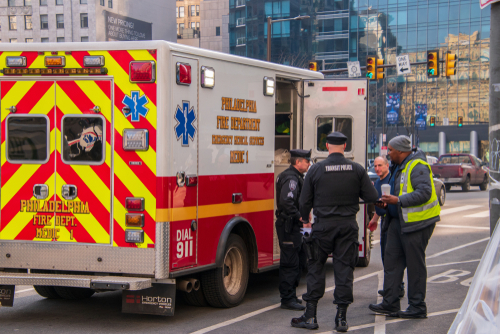Two retired law enforcement officials believe facilities managers should work more closely with emergency responders to keep people, and the facilities they occupy, safe.

Each with 33 years of law enforcement experience, Mark Wood, a retired chief executive police officer from the Indianapolis Metropolitan Police Department; and Jeri Williams, who retired after serving as the police chief of the Phoenix Police Department; spoke with Stacy Meyer, vice president of marketing at CENTEGIX, who hosted the discussion.
Their conversation was part of a session, sponsored by CENTEGIX, “Challenges, Best Practices, and How to Coordinate with Emergency Responders,” as part of the FM NOW: Emergency Preparedness virtual summit.
Types of Emergencies
“From the everyday to the extreme, people who work in your facilities have an expectation that you have a plan for what to do when and if there is an emergency,” Meyer said.
Specific emergencies that facilities managers should be prepared for include fire, medical, hazardous chemicals, bomb threats, violence, severe weather, power/utility failure, and natural disasters.
No matter the type of emergency, Wood says “communication is absolutely the key for emergency preparedness.”
To facilitate communication, facilities managers should ensure they have a written emergency preparedness plan.
Refining the Plan
Often on a shelf, in a three-ring red notebook, Williams said that facilities managers should do the following with their written emergency preparedness plan:
1. Review the book
Locate and review the physical emergency preparedness book in advance of an emergency.
“If during the emergency is the first time that you’ve looked at this book, you are too late,” Williams said.
Facilities staff are often stressed during emergencies and may forget something if they do not already know the plan.
2. Update the book
Keep your emergency plan documentation current and determine what upgrades were made to the facility that need to be reflected in the book. Be sure to contact fire and law enforcement regarding updates that need to be added to the book.
Ensure “maps are up to date, making sure anything that’s been retrofitted is up to date and listed in the book,” Williams said.
Facilities should consider upgrading to a digital mapping solution that can indicate the locations of automatic external defibrillators (AEDs) and fire extinguishers as well as provide the ability to flag maintenance issues.
3. Develop Relationships
Get to know which specific professionals you will be working with if an emergency happens in your facility.
Become familiar with emergency, public works, and utilities personnel. Examples include the police chief, fire chief, head of water services, a power company representative, etc.
4. Tabletop Exercises
Have all emergency personnel meet with your facilities team to discuss complex emergency scenarios. Create and coordinate emergency plans based on the results of those scenarios.
5. Delegation
Appoint specific professionals to solely oversee specific areas when an emergency occurs. For example, you can appoint a teammate to evacuate a floor or an entire building.
6. Building Access
To prevent or deter security emergencies from happening, facilities managers should be sure the facility has an access control system.
“Having an access control program that allows you to know who’s in your facility at any given time, and potentially where they are in the facility, so you can get to them, take care of them, account for them, is just vitally important,” Wood said.
Additionally, Williams explained the importance of having everyone wear badges in their facilities. She said that workers should be instructed to talk to people who don’t wear badges, explain that badges are required, and offer to walk them to a desk to get a badge. Any suspicious people should be reported to security or law enforcement.
Learn More
Other topics discussed during the webinar include post-incident analysis, training and drills, and wearable panic buttons. To watch the full webinar on-demand for free, click here.
